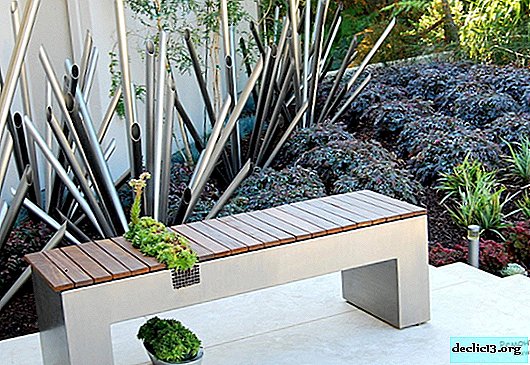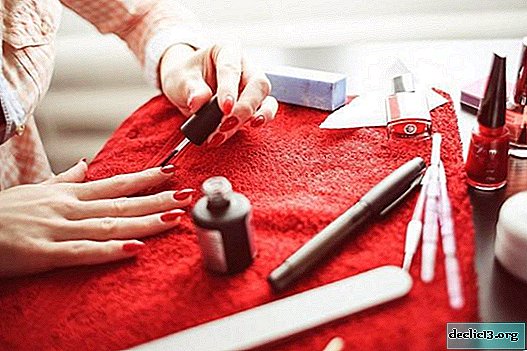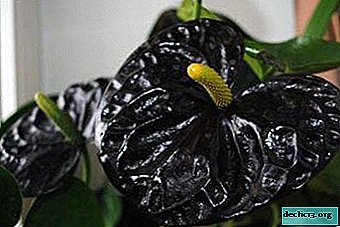All about how to grow an orchid at home from seeds bought in China
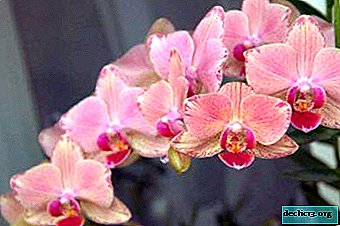
Orchid is a beautiful flower, which has many fans, it is grown by both experienced gardeners and amateur flower growers.
However, it is not very cheap and often its lovers have a desire to grow a plant on their own, ordering seeds in China.
Moreover, there are a lot of them in a pack, but they are inexpensive. Is it possible and how to do it, our article will tell.
Plant species
On Chinese sites, you can most often order orchid seeds of the most popular Phalaenopsis species, Cymbidium, Dendrobium, Wanda, Cattleya of various varieties are also presented. These species are hybrid, created by breeders specifically to grow at home with the least labor and to please the owners with beauty.
Can this be cultivated?
If you are lucky enough to get real orchid seeds from a Chinese site, then theoretically you can grow an orchid from it. But, unfortunately, this is a very long and laborious process. You will have to purchase the necessary equipment and materials, maintain sterility and the right temperature. Some growers, for fun, call it all a real laboratory. In addition, the result will have to wait a long time.
REFERENCE: the planted seed will be able to turn into a full-grown adult orchid flower in 4-6 years.Features
 When ordering seeds from China, you can often come across unscrupulous sellers who give out seeds of other plants and even seeds of lawn grass or weeds for orchid seeds. In this case, many feel sorry for the time and labor spent trying to grow, and they are disappointed in this idea.
When ordering seeds from China, you can often come across unscrupulous sellers who give out seeds of other plants and even seeds of lawn grass or weeds for orchid seeds. In this case, many feel sorry for the time and labor spent trying to grow, and they are disappointed in this idea.
But, fortunately, they are inexpensive and if you have a strong desire to try to grow them, you can order again. After all, if you manage to grow the flower yourself, you will get incomparable pleasure by observing its growth, and then the beautiful adult flowering orchid.
How do they look?
Orchid seeds are very small and easy to mistaken for dust. Their size is 15 thousand times smaller than the size of a grain of wheat. In addition, they, unlike other seeds of most crops that have a supply of nutrients or endosperm, have it in an insignificant amount in the bud.
How do such vulnerable seeds exist in nature and enable orchids to reproduce? The point is their quantity. One orchid flower can produce from 3 to 5 million seeds, and due to their small weight and size, they are easily carried by the wind, settling on the bark of trees. However, not all of them will be destined to turn into adult flowers; only a few of those who have fixed on the tree will do this. This is harsh natural selection.
Where to buy, how much are approximately?
Orchid seeds can be ordered at popular Chinese online shopping sites. in the sections "Home and Garden", "For the Garden", "Seeds" and the like. The cost of a pack of seeds is about 35 Russian rubles.
How to check the purchase for authenticity?
After receiving the seeds, open the packaging and examine the material obtained before properly planting the shift at home. Remember that real seeds should:
- to be very small, resembling dust (their sizes range from 0.35-3.30 mm in length and 0.08-0.30 mm in width);
- cream, beige or light brown;
- have a narrow elongated shape. IMPORTANT! If you unpack the seeds obtained from China, you will find grains similar to buckwheat or any other shape, size, color other than those described above, alas, they sold you a fake and the orchid will definitely not grow from them.
- We boil 0.5 liters of distilled water.
- Add 10 g of fructose.
- 10 g of glucose.
- 8 g of agar-agar. Cook over low heat, stirring constantly, until the agar-agar is completely dissolved.
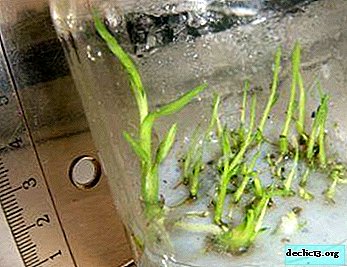 We heat another 0.5 liters of water in another bowl.
We heat another 0.5 liters of water in another bowl.- As soon as it boils, remove, add 5 drops of a root-forming phytostimulator, 1.5 g of complex nitrogen-phosphorus-potassium fertilizers, 1 g of activated carbon.
- Mix well, combine both solutions.
- We adjust the acidity to the desired value.
- To reduce the pH, you can use a solution of potash, to increase - phosphoric acid. Orchid seeds require an acidity of 4.8-5.2 pH.
- Pour 30 mg of hot nutrient into sterilized flasks.
- We close the flasks with stoppers and sterilize the nutrient medium for half an hour.
- For 4-5 days we observe the flasks with the medium. If mold appears in them during this time, they are not suitable for planting seeds.
- Place a wire rack on the water tank and a substrate in the flask on it.
- Pipette the seeds after sterilization from the solution and place on the surface of the substrate.
- Next, close the flasks or jars with cotton swabs or caps, put on germination.
- You should always monitor the temperature: it should be 18-23 degrees Celsius, the duration of daylight hours - an average of 12-14 hours.
Also, when you look at them under a microscope or a very powerful magnifying glass, you can see that these are seeds that resemble wheat grains in shape and size, but many times smaller.
 Often, buyers who are caught up in the idea of growing a flower from seeds make a purchase by reading rave reviews from other customers and paying attention to the seller’s high rating. However, most often, this delight is associated with the speed of delivery or the quality of the packaging of the material. It is extremely rare for buyers to attach a photo of what has grown from seeds, and even more so, a finished flower, because, as you know, it takes years to grow it.
Often, buyers who are caught up in the idea of growing a flower from seeds make a purchase by reading rave reviews from other customers and paying attention to the seller’s high rating. However, most often, this delight is associated with the speed of delivery or the quality of the packaging of the material. It is extremely rare for buyers to attach a photo of what has grown from seeds, and even more so, a finished flower, because, as you know, it takes years to grow it.
Some flower lovers cherish the hope that the seeds obtained are a seed box, open it, and, most often, do not find small seeds in it. It should be remembered that orchid seed box narrow and about 3 cm long, green. In nature, it reveals itself precisely at the moment when the seeds are ripe and ready for planting. Therefore, it is unlikely that you will receive a closed seed box.
Step-by-step instructions on how to plant
Since orchid seeds are very capricious, when planting them independently, it is very important to properly prepare the inventory, nutrient medium, sow and care for the seedlings. Even under ideal conditions, only a small percentage of seeds can turn into a real flower. Therefore, neglecting at least one of the points, you run the risk of not growing a single plant at all.
Inventory and its sterilization
For planting, it is necessary to prepare glass laboratory test tubes 15 cm long and 1.5 cm wide, a tripod, cotton gauze tubes for test tubes. If you didn’t have test tubes or it’s difficult or expensive to purchase, you can use glass jars from baby food with screw caps. Remember that the whole process of planting seeds should occur almost in laboratory conditions, so the tubes or jars together with the lids must be sterilized in an autoclave, pressure cooker or medical sterilizer at a temperature of 120 degrees for 30 minutes.
Preparation of the nutrient medium
For planting, you can use both purchased nutrient medium, and made independently. Let us dwell on the second option. You can prepare a nutrient medium as follows:
Watch a video on how to prepare a culture medium for growing seeds.
Sowing
ATTENTION! Seeds also need to be sterilized. To do this, prepare the 10th bleach solution, shake, filter, hold the seeds there for 10 minutes and immediately plant.For sowing, a device is used that additionally sterilizes the seeds.
Sowing is as follows:
Photo
Next, you can see a photo of how the seeds look and what grew out of them:




Care
A few weeks or months later, changes begin to occur with crops. Green balls appear on them, then the first leaves. After the appearance of two or three leaves, roots begin to appear. Only after a year can the seedlings be transplanted into a pot. To fill the pot, a substrate of moss, fern roots and pine bark is suitable.
The soil should be as shallow as possible. The sprouts are taken out of the flask as accurately as possible with forceps, washed in water and transplanted into a substrate, which is pre-filled with boiling water for 30 minutes. Plants need lighting and high humidity all the time.
Problems and difficulties
Problems in growing orchids from seeds can wait at any stage. However, the most common low germination is caused by poor-quality seeds, the slightest flaws in sterilitynon-compliance with temperature and humidity conditions. As a result, the death of seeds or seedlings and the absence of a result in the form of a beautiful flower. Starting this process, it is worth analyzing your conditions, the availability of time and money, as well as great patience so as not to be disappointed with difficulties.
Conclusion
Many difficulties await those who decide to grow orchids from Chinese seeds on their own. Starting from the huge number of fakes sold by enterprising merchants from the Middle Kingdom, ending with a very painstaking period of their landing and growth. But still, if there is a great desire, it is worth a try!

 We heat another 0.5 liters of water in another bowl.
We heat another 0.5 liters of water in another bowl.



